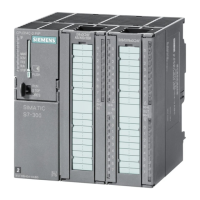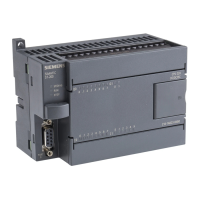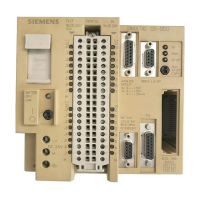Communication
8.4 Ethernet
S7-200 SMART
400 System Manual, V2.3, 07/2017, A5E03822230-AF
An Ethernet network is a differential (multi-point) network that can have up to 32 segments
and 1,024 nodes. Ethernet allows for data transfer at a high speed (up to 100 Mbit/s) and
long distances (Copper: Maximum approximately 1.5km; Optical: Maximum approximately
4.3km).
Possible Ethernet connections include connections for the following:
● Programming devices
● CPU-to-CPU GET/PUT communication
● HMI displays
● Open User Communication (OUC)
Note
The CPU models CPU CR20s, CPU CR30s, CPU CR40s, and CPU CR60s have no
Ethernet port and no functions related
to the use of Ethernet communications.
A Local / Partner (remote) connection defines a logical assignment of two communication
partners to establish a communication connection. A connection is defined by the following:
● Communication partners involved (one active, one passive)
● Type of connection (programming device, HMI, CPU, or other device)
● Connection path (network, IP address, subnet mask, gateway)
The communication partners set up and establish the communication connection. The active
device establishes the connection, and the passive device either accepts or rejects the
connection request from the active device. After a connection is established, it is
automatically maintained by the active device and monitored by both the devices.
If the connection is terminated (for example, due to a line break or one of the partners breaks
the connection), the active partner attempts to re-establish the connection. The passive
device will also note the termination of the connection and take actions (for example,
revoking the password privileges of the now disconnected active partner).
The S7-200 SMART CPUs are both active and passive devices. When an active device (for
example, a computer running STEP 7-MicroWIN SMART or an HMI) establishes a
connection, the CPU decides whether to accept or reject the connection request, based
upon the type of the connection and how many connections of a given type are allowed.

